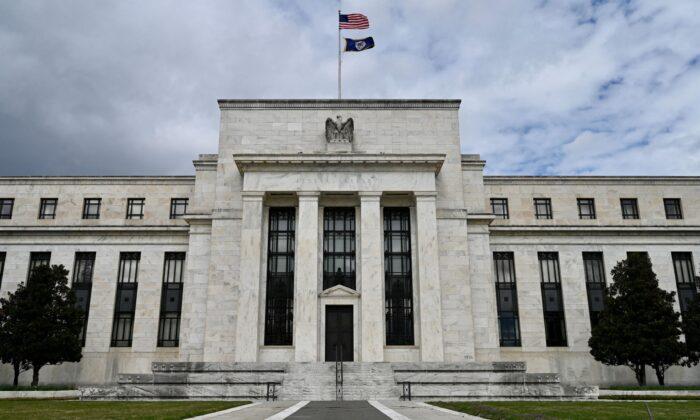The Federal Reserve paying interest on bank reserves and selling treasuries to banks overnight, which in practice means paying banks so that they lend less, is becoming more expensive with the Fed’s recently initiated series of interest rate hikes. Over the past four weeks, the central bank has dished out nearly $1.5 billion to financial institutions that keep their cash stockpiles with the Fed and buy its bonds overnight. That number could multiply in the coming months.
With the gargantuan federal spending that took place during the COVID-19 pandemic, banks have amassed an unprecedented hoard of cash reserves—money deposited by their customers. Normally, such reserves would be a dead weight on the banks’ balance sheets, not put to any productive use. Banks would thus try to lend against it and invest it, making it circulate in the economy.
As the inflation kept going up, in March, the Fed finally started to raise the rates in a bid to tighten the credit spigots. The rates target elevated from a zero- to 0.25-percent range to a 0.25- to 0.5-percent range. The move appears tiny, but the effect on the interest payments was dramatic. The interest rate on reserves more than doubled to 0.4 percent from 0.15 percent. The reverse repo rate jumped to 0.3 percent, multiplying by six.
In the four weeks since the rate hike, the Fed dished out nearly $1.2 billion in reserve interest and more than $300 million in reverse repo interest.
The Fed has foreshadowed plans to let the rates go up to about 2 percent by the end of the year. Depending on how high the banks’ reserves are by then, the Fed could end up paying $5 billion or perhaps $8 billion per month to the banks.
“The cost of paying interest on excess reserves is not really relevant to Fed officials because in a worst-case scenario they just send the bill to the U.S. Treasury,” Mark Thornton, an economist with the classical liberal Mises Institute, said via email. “I think they are walking themselves into a corner, but they have been adept at wiggling out of such problems without much damage to themselves in the recent past.”
Thus far, the Fed has no issue paying the interest. Because of its massive portfolio, which includes $2.7 trillion in mortgage-backed securities, it collected more than $100 billion in interest last year, according to Robert Murphy, a senior fellow with the Mises Institute and expert on monetary policy.
“Of course, the money isn’t free,“ Murphy told The Epoch Times via email. ”You could say that, in a sense, U.S. taxpayers would be footing the bill for the extra interest paid to the banks by the Fed.”






Friends Read Free